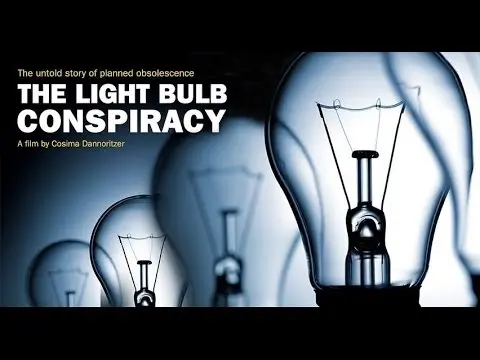26
Planned Obsolescence documentary - The Light Bulb Conspiracy (2010) RENT / BUY TO MORE GREAT WORK
invidious.protokolla.fiThe Light Bulb Conspiracy (2010)
Pret-a-jeter (original title)
53 min | Documentary | France | Spain
Once upon a time..... products were made to last. Then, at the beginning of the 1920s, a group of businessmen were struck by the following insight: 'A product that refuses to wear out is a tragedy of business' (1928). Thus Planned Obsolescence was born. Shortly after, the first worldwide cartel was set up expressly to reduce the life span of the incandescent light bulb, a symbol for innovation and bright new ideas, and the first official victim of Planned Obsolescence. During the 1950s, with the birth of the consumer society, the concept took on a whole new meaning, as explained by flamboyant designer Brooks Stevens: 'Planned Obsolescence, the desire to own something a little newer, a little better, a little sooner than is necessary...'. The growth society flourished, everybody had everything, the waste was piling up (preferably far away in illegal dumps in the Third World) - until consumers started rebelling... Can the modern growth society survive without Planned Obsolescence? Did ... Written by Cosima Dannoritzer
Director: Cosima Dannoritzer
Writer: Cosima Dannoritzer
http://www.imdb.com/title/tt1825163/



I watched up to 16:04 like, and I have to admit what I saw was a technical talk about the differences of the bulbs. So it didn’t sound to me like a proof of his claims.
So I looked around and found a Briefing from the EU [Planned obsolescence: Exploring the issue - 2016] and they also talk about it like it’s a thing:
Yeah Philips was also in there, this is well known in The Netherlands. They’d give out fines if a company made bulbs that would last longer.
They limited it to that because, at the time, there was only one way to make a lightbulb and they wanted a consistent brightness. The easiest way to do that was to make a standard filament, and the easiest way to measure that was to test how long on average it lasted.
It is like saying a bread cartel was made by saying a loaf of bread has to be a standard weight and anyone selling a different weight was fined. Making an industry standard that is arguably for the benefit of the customer is not the same as planned obsolescence. Especially when you consider the fact that the 1000 standard wasn’t followed when they started making different kinds of lightbulbs that didn’t use filament.